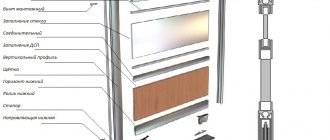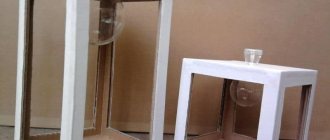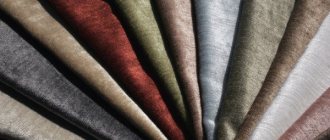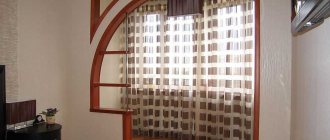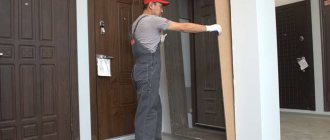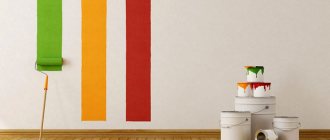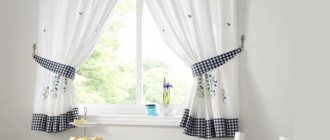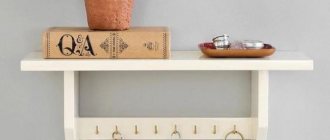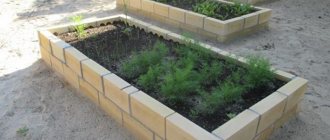Repair is not always easy, but when using high-quality material, many processes are simplified. If the doors have become visually unattractive, there is no need to change them. There is a good option - this is a self-adhesive film. This material is unique not only in its characteristics, but also in its wide range.
You can choose any option without spending too much money. This type of finishing is also used not on doors. The film can be found on cabinets, window sills, chairs, etc. It is only important to choose a surface on which it will look good and last a long time. Having made a choice, the question arises of how to cover the doors with self-adhesive film. The procedure is not complicated and there is no need to have special skills.
What assortment?
The assortment is large, there are different colors, with drawings and photos. But with the type of film it’s not so simple. PVC films available for sale:
- Matte.
- Glossy.
- Transparent.
In addition, manufacturers take on individual orders for the existing interior. The composition of the film is simple - on one side there is an adhesive base, and on the other there is a pattern that is covered with a protective layer. Thanks to this, the surface becomes glossy and unique. Once it is in the right place, there is no smell. The material can be washed, and dust does not settle on the surface. The film is not difficult to care for, they say in the reviews.
Main advantages and disadvantages
The film used for covering doors has a number of advantages compared to other materials. The main advantages include the following:
- Easy to clean - just wipe the door surface with a cloth, without using abrasive detergents;
- Affordable price - the cost of the film is several times cheaper than buying a new door;
- Odorless – does not emit odors even at elevated room temperatures;
- Ease of use - you can paste the products yourself;
- The surface being pasted is not damaged - the pasting procedure does not require changes to the surface of the door leaf;
- Resistance to humidity – doors coated with PVC film can be installed in rooms with high levels of humidity (kitchen, bathroom);
- Durability – if you follow basic operating rules, doors can last for many years.
Particular attention should be paid to such factors as resistance to the formation of fungus, mold, bacteria and the proliferation of other microorganisms. And resistance to sunlight allows you to maintain the original appearance of the surface for many years.
Even when the surface is heated, the door film does not emit harmful substances, which is harmless to the human body and safe for the environment. This indicates that PVC film can be used to cover surfaces in any room, regardless of the nature of its use.
The disadvantages of using PVC film for covering doors include the following:
Defects are not masked
If you do not first repair the surface of the door, then when applying the film, all existing chips, dents and other defects will remain noticeable.
Single use
The film is applied to the product once and cannot be reused.
Delamination of edge elements
It may appear when sticking a low-quality film or as a result of prolonged use of PVC-coated doors.
The nuances of working with finishing materials
Before you cover your doors with self-adhesive film, you should know some features. There are many advantages, but the main ones are that the material can withstand high temperatures, it is easy to care for, and the paint does not fade for a long time.
Before starting the main work, you will have to prepare the surface well. If you do not pay attention to this, then errors in the form of bubbles and cracks will appear on the film side. You should not assume that such material can mask large errors, irregularities and depressions. This is more of a decorative element of a good, level surface. It's not reusable. If it goes bad, it is removed and thrown away.
Why do you need self-adhesive?
Self-adhesive is used for complete repairs or for the restoration of outdated items, doors and furniture. The purpose of application may be to impart strength to various surfaces. For example, if wooden doors are installed in a bathroom, they need to be given moisture-resistant properties, and film is indispensable in this case.
Attention! When choosing a material for pasting, pay attention not only to the color, but also to the durability of the paints. Run your hand over the surface of the self-adhesive
If your palm is slightly stained, the paint will quickly rub off.
If you have made a renovation, radically changing the color scheme of the room, but you don’t want to change a door that doesn’t match the color, then self-adhesive will also come in handy.
Using self-adhesive film you can increase the moisture-proof properties of doors
Another area of application is protecting the door from scratches and damage of any kind.
Preparatory work
How to cover doors with self-adhesive film? Surface preparation is done first. To avoid delaying the process, you need to have everything you need:
- Sharp knife.
- Scissors (the more, the more convenient).
- Ruler and marker.
- Surface leveling tool.
- Rags.
- Elements for removing the door from its hinges.
When choosing a color, you should focus on the type of door. If it is an entrance, then moderation should be a priority, but without departing from the existing interior. By giving preference to matte tones, you can hide fingerprints and settled dust, and the external appearance of the door will look noble and presentable. With interior doors, not everything is so tight. You can use bright colors and unusual patterns, thereby adding interesting notes to the overall perception of space.
Before covering the doors with self-adhesive film, it is worth taking the correct measurements. First you need to calculate the amount of material. It should be taken with an addition, in case of error or defect. It is believed that in order for it to turn out beautifully, you need to apply the material to the door frame.
The article contains photos of doors covered with self-adhesive film, which allows you to understand how it looks visually. The first stage is working on the surface. If the door has peeling paint or a rough surface, all this is removed. Sandpaper is suitable for this. They work in two stages - first large, and then small. If there are large depressions, putty for external use helps, after which they are covered with a small layer of primer. It is important that there is a smooth, clean, even surface for pasting.
Design Features
When choosing a self-adhesive film for a door leaf, you need to think carefully about the design. The features of this material allow you to give preference to the option that fits perfectly into the existing design of the room or hallway.
When facing a straight door, it is rational to use either a plain film or a patterned one. For panels you can use more complex combinations. Each of these sections of the door leaf can be finished in its own shade. It is important to take into account the interior features of the room. An undoubted advantage of this gluing technology is the ability to cover each side of the door differently. For consumers with a rich imagination, self-adhesive film for doors with a photo printed on it is perfect.
In addition to the door leaf, this material effectively decorates the frame, trim, and opening. Moreover, you can use either an identical film or some contrasting option. Not least important is the type of surface of the material. The glossy self-adhesive film is easy to clean and wash, and it also has original glare and reflections. And matte looks more aesthetically pleasing, nobler and hides fingerprints.
How to apply the film?
As soon as the surface is ready, you will have to remove the doors and dismantle the handle, which will get in the way. How to properly cover a door with self-adhesive film? After fixing it, a small volume is added. Measurements are taken and applied for cutting, with a slight margin. This stock can be easily removed when not needed.
Do not immediately remove the protective layer. Do this in stages, smoothing the surface with a dry cloth. It is convenient to work with a rubber spatula. If it is not available, you should not specifically purchase it. Sometimes bubbles form. What to do in this case? Take any sharp object (a needle) and carefully pierce the material. After this, the entire surface is pressed well.
What will help beginners?
Before covering an old door with self-adhesive film, it needs to be well treated and cleaned. How to help inexperienced craftsmen? If something goes wrong, correction is made immediately. The easiest way to paste is on a metal or glass surface. When something is broken, a small amount of water helps to level the surface and bring it to perfection.
For ease of work, there is a special marking on the left side, which makes it easier to measure everything accurately. After creating the desired surface, the door is left for half an hour for the adhesive base to completely dry. Then the handles are put in place and the entire structure is fixed.
Surface preparation
We prepare the plane for pasting. To make the gluing process easier, it is preferable to remove the door. Dismantle handles, hinges, locks, and, if present, glass.
The surface must be smooth, otherwise all imperfections in the door will be visible. Smoothness can be achieved in several ways.
The old base is covered with paint:
- using a grinder;
When using a sander, a lot of dust is generated in the air, so cover indoor items before use.
- use of special solvents;
Working with solvents can be harmful to health, so use personal protective equipment.
- using a hair dryer will allow you to remove the old paint without harm to health and save time (after heating with a hair dryer, the paint is removed with a spatula);
- use of power tools with special attachments.
The surface is varnished:
- sand to remove damage.
The surface is covered with old film:
- warm it up with a hairdryer or moisten it well with hot water, then pick it up and remove it from the door.
After leveling the surface, it is necessary to degrease it. For this purpose, use soap and water or a store-bought degreaser.
If there are depressions or chips, it is necessary to repair the unevenness with putty, then rub and prime.
Is it possible to remove the film from the door?
Craftsmen believe that after applying such a film, the doors can be varnished on top. But this is provided that dismantling is not required in the future. Such material is short-lived, and when the time comes to remove it, the varnish will become a serious obstacle to this. But if you know some features, questions will not arise.
First, any film, when heated, begins to lag behind the surface. To do this, take a hairdryer, fan, and heaters. The surface is heated for some time, after which the trim is pulled off by the corner. If it doesn’t work out somewhere, you need to redirect the heat flow. Some people use boiling water - use a cloth with hot water to heat the entire surface and carefully remove it. It is convenient to work with a spatula, but glue may remain on the door afterwards. There will be no difficulty with it - just go over it with alcohol or any similar liquid.
Wealth of choice
Every year, the range of PVC films is expanding due to the introduction of new color shades that make it possible to imitate one or another texture of various materials. In addition to neutral solid colors, you can choose a brighter, rich range of shades.
Film with an imitation of wood structure is especially popular. The finished product is practically indistinguishable from its more expensive “brothers” made of natural wood. It all depends on the quality of the PVC film and the accuracy of its application to the surface of the door leaf.
Moreover, you can complement the door decor by inserting glass fragments, panels, curves, etc. If desired, you can update your home interior at minimal cost by covering old doors with PVC film of the desired color.
Doors can be covered with PVC film for any room. However, this option for restoring a door leaf is most popular when decorating a door in a kitchen or bathroom. This can certainly be considered the most budget-friendly method of carrying out repair work.
Characteristics
How to cover an interior door with self-adhesive film? The procedure itself is easy, although sometimes questions and errors arise. Visually, this is a canvas, on one side of which there is an adhesive composition, and on the other, a decorative pattern. The material is available for sale in rolls, the widths vary. In addition, different materials can be used for production:
- Polymer film. This is the most common option.
- Metallized foil.
- Plain paper.
Most often, people acquire the first type. It is easy to use, is considered durable and looks beautiful. And the main thing that attracts everyone is the ease of cleansing. There are many different options in implementation. Most often, people choose imitation of some material - wood, stone. But repeated lines of glass or metal look the most beautiful. Of course, the cost of the second type is higher.
How to properly cover interior doors with self-adhesive film?
Most often, it is the interior ones that quickly lose their presentable appearance. It is not always convenient or cheap to completely change it, but using decorating materials is quite realistic. So, each step must be performed carefully:
- The door and all present fittings are dismantled.
- The existing old coating is removed. To do this, take a spatula (or use another convenient tool).
- The working surface is degreased, washed or white spirit is applied.
- Deep damage should be covered with putty for exterior use.
- If the doors are wooden, you will have to go over the surface with wallpaper glue or primer.
- When the doors fit tightly into the frame, you should immediately trim them slightly, as the film will add a slight additional volume.
Once everything is prepared, you need to apply the film. Step-by-step instructions are always in the package or on the back of the roll. Therefore, before covering the front door with self-adhesive film, it is worth studying all the useful information. Everything is done in several steps:
- The door leaf is measured using a tape measure, meter or large ruler.
- The film is cut with an overlap of 2 centimeters.
- Work begins with the end parts, making a slight turn of 2 centimeters.
- The protective layer is removed at a short distance, after which the edge is fixed in the desired place. Then the film is pressed and smoothed simultaneously. Use a rubber spatula or roller for this. If jams appear, you will have to tear off the material and fix it again. The air is released using a needle.
- When creating a complex pattern, you will have to do the joining, in the form of an overlap of two millimeters.
- When it comes to pasting over bends, it is better to use warm air flows. To do this, direct a hairdryer onto the film, then leave it in the heated state in the desired place, carefully smooth it out and press it down. In order to retain the main material at the ends as much as possible, you need to use an iron. Iron through thick fabric.
- It takes at least five hours for the glue to dry completely. After this, the general condition of the entire surface is assessed. If defects appear, the film is re-glued.
Application area
As you have seen, self-adhesive film has a lot of advantages. But the main thing is that it is universal and can be glued to almost any surface. Manufacturers recommend using the product for cladding doors made of chipboard, MDF, PVC and other similar budget materials, which often have an inexpressive appearance and wear out quickly. And thanks to the self-adhesive film, you can completely transform the door leaf and make it pleasing to the eye. So, most people choose natural wood veneer material. As a result, an inexpensive door acquires noble features and looks very presentable.
But it is worth noting that film finishing is used not only for budget door models, but also for metal structures. The question here is what goals the owner of the home is pursuing. For example, not everyone likes the elegant shine of iron, so people want to give their doors a more traditional wooden look. There are even cases when the owner wants to mislead possible uninvited guests by concealing that the structure is actually made of metal. By the way, film is often used to protect the surface, since even the most durable metal doors are exposed to adverse external factors. Therefore, if there is a large amount of precipitation in your region, then finishing the entrance doors with self-adhesive is more than justified - this way you will prevent metal corrosion.
What's next?
When the work is done efficiently, you can remove all the leftovers and extra pieces. Now the fittings are being installed and the doors are in place. The move should not be cramped.
This decorative film has a wide range of applications and is not only for covering doors.
The interior can be completely changed without investing a large amount of money. You don’t even need to throw away the leftovers, as they can be used in any other direction.
Required Tools
Before proceeding to pasting the door, you need to prepare the fixtures. To work you may need:
- ruler, metal corner and measuring tape (marking);
- pen or marker (outlining contours);
- scissors or construction knife (cutting film);
- rubber spatula (leveling the pasted coating);
- sprayer with water (adjusting the position of the self-adhesive);
- hair dryer (processing corners and protrusions).
If the door leaf needs preparation, then you need to prepare sandpaper or a sander, a plane, primer and putty.


